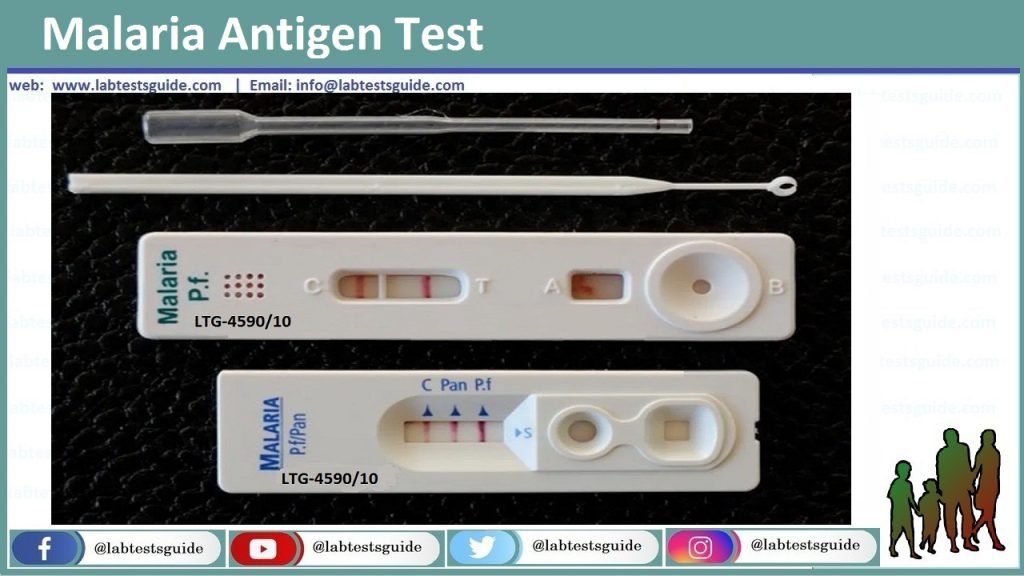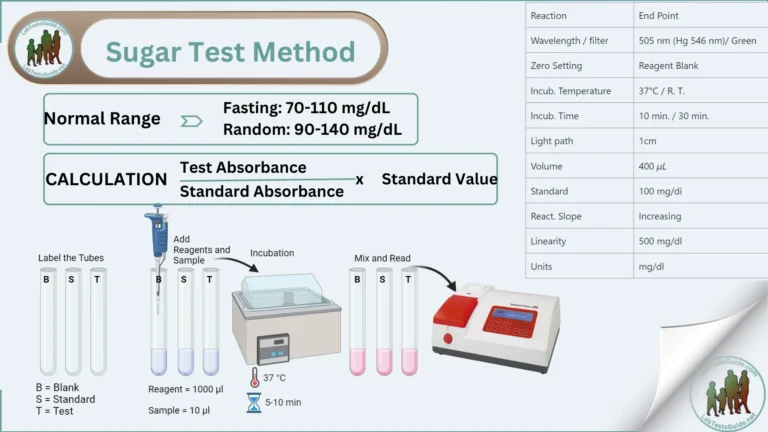Malaria is an infectious disease caused by Plasmodium parasites. These parasites are primarily spread by the bite of infected female Anopheles mosquitos. There are four main types of Plasmodium (P) species that infect humans:

Sample:
- Malarial parasite ( MP ) may be diagnosed from a blood smear of a patient with a fever.
- The best time to make smear is during shivering.
- Make thick and thin blood smears.
- Serum needed for a Serological method and for PCR.
Complications Of Malaria:
- The patient may have :
- Cerebral malaria.
- Anemia.
- Organ failure.
- Some patients may have respiratory difficulty.
- Rarely there may be low blood sugar levels.
Malaria is caused by haemoparasites of the genus Plasmodium.
The four species of plasmodium causing malaria are
- Plasmodium falciparum
- Plasmodium malariae
- Plasmodium ovale
- Plasmodium vivax
Main transmission route is by mosquito bite, however, transmission through blood transfusion and placenta can also occur. The mosquito acting as a vector for this disease is the female anopheles mosquito. Malaria is diagnosed by microscopic examination of the blood smear but in the recent past, rapid diagnostic tests detecting malarial parasite antigens were developed to acquire the result in a lesser amount of time.
PRINCIPLE:
- The immuno-chromatographic (ICT) test device is coated with monoclonal antibodies to histidine-rich protein-2 (specific to P. falciparum) and pan-specific or species-specific plasmodium lactate dehydrogenase (specific to all four plasmodium species).
- Visible lines are observed in the test region if specific antigens are present in the blood sample.
- The histidine-rich protein-2 (HRP-2) is present in several parts of the cell including the cytoplasm of P. falciparum.
- As HRP-2 is present only in P. falciparum, this test region will give positive result only if the sample contains P. falciparum.
- The plasmodium lactate dehydrogenase (pLDH) is important for ATP production and is almost similar in all plasmodium species.
- This test region will give positive result if the sample contains P. malariae, P. vivax or P. ovale.
- If both test regions show positive result, it indicates either an infection with P. falciparum or a mixed infection (of all four plasmodium species).
REQUIREMENTS:
- Whole blood
- Test device or cassette
- Sample diluent
- Pipette
- Timer
PROCEDURE:
- Perform the test and open the kit at room temperature.
- Place 5ul blood into a sample well on the device.
- Place four drops of Malaria Buffer in diluent well.
- Wait for 20 minutes.
- Examine macroscopically for the appearance of lines (bands) on the test device.
RESULTS:
- Appearance of a single line in the control region indicates a negative reaction.
- Appearance of two lines; one in control region and second in Pf test region, indicates infection with P. falciparum.
- Appearance of two lines; one in control region and second in Pan test region, indicates infection with P.malariae, P.ovale or P.vivax.
- Appearance of three lines; one in control region, second in Pan test region and third in Pf test region, indicates either an infection with P. falciparum or a mixed infection of all four species.
- In case the control region line does not appear, the test should be declared invalid and repeated.
QUALITY CONTROL:
A positive control is included in the test device which is run parallel to every test performed.
INTERPRETATION OF MALARIA ANTIGEN TEST:
- Common anticoagulants such as EDTA and tri-sodium citrate do not affect the test performance.
- False positive results can occur if the result is read after 30 minutes.
- This rapid test does not require highly skilled personnel and is very helpful in rapid field testing where equipment like microscope is not available.
Possible References Used





